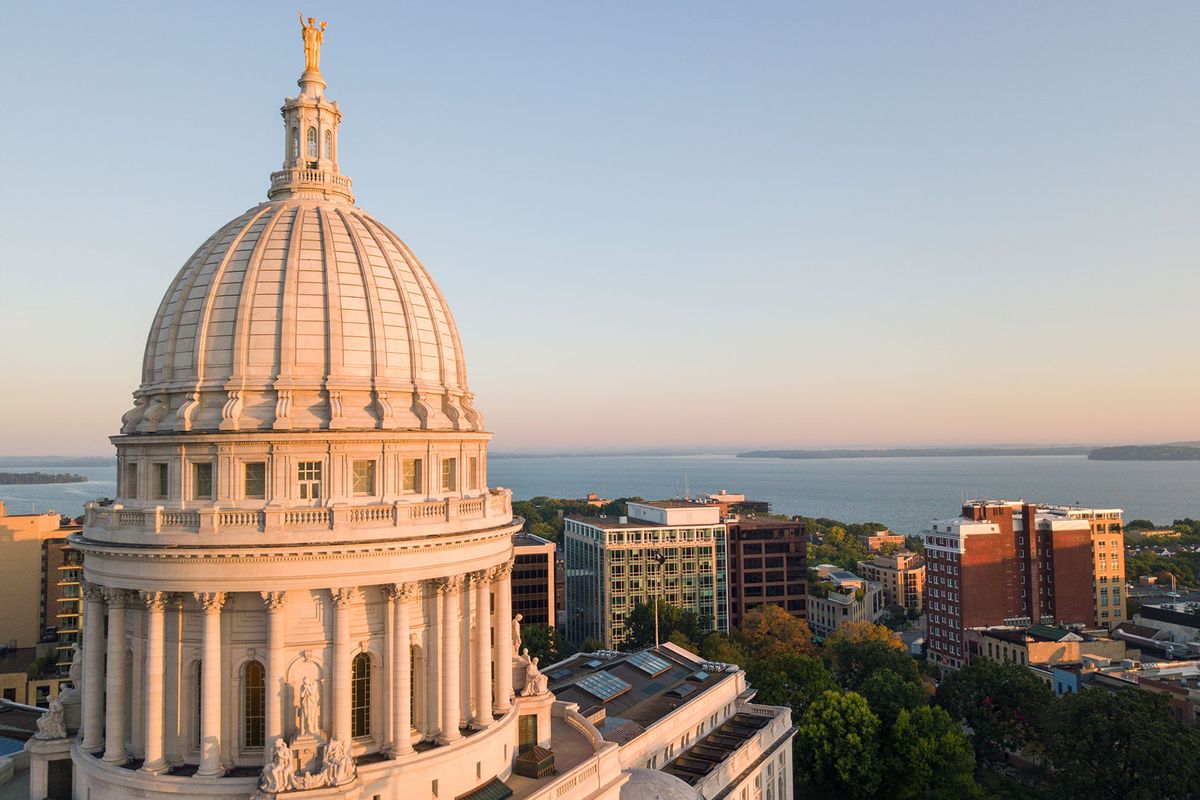Don’t ignore the Wisconsin Supreme Court race — it could be crucial for democracy

In April, Wisconsin voters will go to the polls to elect just one justice on just one court — and this race has rightfully been deemed one of the most consequential elections of the year. That’s because the person elected to the Wisconsin Supreme Court this year could well prove to be the deciding vote on whether Wisconsin protects abortion rights, on cases over election laws heading into the 2024 election cycle, and on whether the will of Wisconsin voters is upheld after the 2024 presidential election. Regardless of what state you live in, it’s worth paying attention to this race, which could impact the fate of our democracy.
There are seven justices on the Wisconsin Supreme Court. While the court is meant to be nonpartisan and the election is nonpartisan, the current court is routinely described as having a 4-3 conservative majority. The April election is to fill the seat of Justice Patience Roggensack, one of the described conservative justices, who is stepping down.
The Wisconsin Supreme Court has unfortunately fallen victim to the same corrosive partisanship that defines the U.S. Supreme Court — with the legitimacy of both courts eroded by it. Decisions made by these courts can increasingly be predicted based on the partisan alliance of the respective justices. This is particularly evident in cases related to two fundamental rights: abortion and voting.
In Wisconsin, the U.S. Supreme Court’s Dobbs decision and its erasure of the federal constitutional right to abortion revived a 19th-century law banning abortion. That law is horrific on its face, forbidding all abortions except to preserve the life of the mother. To compound the challenges, its wording is also excessively vague — perhaps because it was written more than 150 years ago.
How much is on the line in this judicial election? Consider that $10 million will likely be spent on this race, most of that in untraceable dark money.
The Wisconsin Supreme Court will decide, in litigation that’s now en route to the court, whether this ban violates the state constitution and what that constitution does or does not protect in the way of abortion rights. As states that protect abortion rights see an increasing number of out-of-state patients, the Wisconsin Supreme Court’s decision will inevitably have ramifications for patients both in Wisconsin and outside the state.
The court could have an even greater national impact on the electoral front. Our elections have become judicial affairs with a myriad of litigation over voting laws taking place before Election Day and more litigation over election results afterwards.
Last year, before the midterm elections, the Wisconsin Supreme Court ruled, in a 4-3 decision, that drop boxes were illegal. In 2021, the court, also in a 4-3 decision, largely upheld Republicans’ gerrymandered electoral maps. It is impossible to know the magnitude of the impact these decisions had on election results, but they undoubtedly had one.
Want a daily wrap-up of all the news and commentary Salon has to offer? Subscribe to our morning newsletter, Crash Course.
While the Wisconsin Supreme Court rejected Donald Trump’s lawsuit challenging the state’s election results in 2020, it did so in a 4-3 decision, with one of the court’s conservatives joining the three liberal justices to dismiss the suit. The closeness of that decision, coupled with the court’s pattern of decisions about the state’s electoral laws and maps, leave me worried about the next election cycle. We want to believe that a frivolous lawsuit aimed at overturning the will of the voters would be similarly dismissed in 2024, but that will depend on the people who sit on the court at the time of the lawsuit.
We’ve already had one presidential election decided by the U.S. Supreme Court, in the case Bush v. Gore in 2000. In 2024, a state supreme court — especially one in a swing state like Wisconsin — could hold the outcome of the presidential election in its hands.
If you want further evidence of how much is on the line in this judicial election, just look at the millions and millions of dollars being spent on it. Wisconsin’s supreme court races are routinely some of the most expensive judicial races in the country. The 2019 Wisconsin Supreme Court race saw a combined spending of $6 million. This year’s election could exceed $10 million, with most of that coming from dark-money groups.
Now more than ever, the laws and legal systems that govern our lives and our elections are being shaped by state courts. The primary for the Wisconsin Supreme Court election is this Tuesday, and will determine which two candidates move on to the general election on April 4. If you are an eligible voter in Wisconsin, mark your calendar and vote! Your fundamental freedoms could depend upon it. If you live outside Wisconsin, watch closely. Our democracy could depend upon it.
Read more
about the battle for Wisconsin

